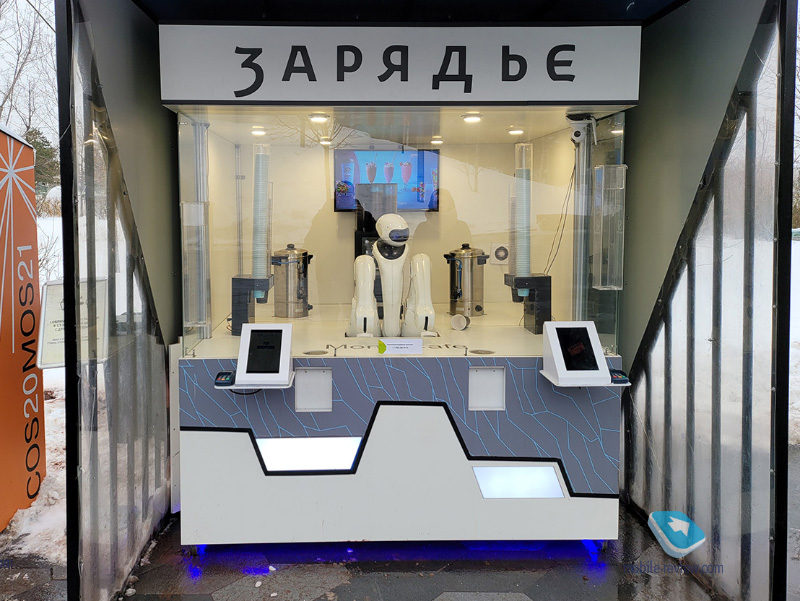
Hey.
At a nearby table, two middle-aged men are arguing loudly, the clock only shows two o’clock in the afternoon. The discussion is flaring up with every minute, the positions of the parties are unshakable. In the left corner of the table sits a lover of progress, he claims that robots will replace everyone – you and me, this girl who carries us coffee, they will fill the whole world. His comrade stands on the position that no one can replace a person: “Vsevolod, you know, someone will have to eat all this, robots cannot be trusted with this!” I don’t know what triggered and made men argue to the point of hoarseness, discussing this issue of world order, but it reminded me of childhood arguments when we were figuring out who is stronger, a boxer or a karate fighter. That day was hectic, in a constant race non-stop, and neatly outlined phrases flew out of my head, faded. In that short period before the pandemic, when progress seemed indestructible, and technology provided unlimited opportunities with a plus sign, many were afraid that robots would oust us and become a cheap labor force.
The same restaurant, at nine o’clock in the morning. My neighbors are now not arguing, but discussing the potential for replacing waiters with robots, since this is a good and correct move in these difficult times. Ideas are gushing, but everything is bumping into the complexity of implementation, as well as the cost of “working hands”, here they are literally golden. Another person, another time, but how everything is similar in our history, and each time it is a run in a circle. Some of the people who are talking recalls that there is an automatic machine in Zaryadye that pours coffee: “Did they just put it on and it doesn’t make money?” I would like to break into someone else’s conversation and ask: what do you think? But men are so absorbed in the idea that they do not want to count, as well as to imagine how much it can cost to rent a place a hundred meters from Red Square, what is the passability there and how long this attraction, even in theory, can entertain visitors.

As for me, this coffee machine is pure attraction for demonstrating those “working hands”, and it does a lot to popularize this trend, people should stop being afraid of robots, at least those that look exactly like that. The novelty has always attracted, has always been an attraction. Once at one of the exhibitions of Edward Hopper I saw the painting “Automatic”.

I love Hopper, he is one of my favorite artists, but this painting did not touch me in the least. A girl is sitting at a table in a cafe, a cup is in her hands, and behind her back is a large showcase, in which lighting lamps are reflected. The only mystery was the title, as there was nothing to cling to in the picture to justify it. I was looking at a sign that read “Edward Hopper, Avtomat, 1927.” The mystery beckons, so I returned to the first hall and took an audio guide, but nothing sensible was said in it. This is the case when everything is going as it should, because in the end I met a girl-art critic, who spoke excellently about all the paintings, and we chatted for almost two hours (she chatted, of course, I listened).
In America, the 20s are the time before the Great Depression, when it seemed that everything would only grow, and new technologies would change the world forever. For America at that time, Europe was a landmark in many ways, and Germany can be safely called an IT giant, German engineers were called geniuses, and Germans were extolled for bold ideas and their implementation. In Germany, the idea was borrowed from “automatic machines”, cafes in which people are served by cars. Today we would call such machines vending machines. No copying of human anatomy, purely utilitarian purpose. First of all, practical Germans tried to create a cafe where the human influence is minimal, and the visitor is responsible for the service. The first “automatic machines” were advertised as an achievement of technical thought, and from that advertisement we learn that they were rude in a cafe at all times: “Now you will not depend on the mood of the waiter, you are given the opportunity to enjoy peace, you do not need to say anything.” Loneliness was considered a lost opportunity, a person was surrounded by a bustling city filled with people. The rural idyll has become for many the ideal of everyday life, forever lost in the big city. But the economic underpinnings of the vending machines were exactly the same as today – to reduce personnel costs, increase the efficiency of the cafe and accurately predict how much money it will bring. I am not at all surprised that it was the Germans, with their pragmatism, who created such a catering format.
Another thing is surprising, that after a hundred years our contemporaries are solving exactly the same issues as replacing a person with an automaton, trying to come up with another form of interaction. And this is a run in a circle, in which people constantly come up with replacements for their own kind. This is not possible yet, since human labor is too cheap and competition is high. But hybrid forms of our coexistence will develop. For example, we won’t need couriers to deliver food. The robot will cope with this faster and more reliably, and if you teach it to fly and allow it to move like this in the city, the delivery speed will be breathtaking.
The idea of German cafe machines has been transformed into vending machines, but there are many more examples of cost optimization. Restaurants with a conveyor belt popular in Japan and other countries are called kaiten-zushi. The first such restaurant appeared in Japan and did not gain much popularity; it looked like a curiosity. The first rise of kaiten-zushi happened after the international exhibition Expo-1970, then this format began to spread around the planet. You are sitting by the ribbon along which food is crawling, you can choose what you like. You cannot touch food and leave it on the tape, this is not customary. At the end of the meal, you will pay for the number of plates you have taken. Usually the plates are made in different colors, you know the cost of the dish by the rim. You can stumble upon such restaurants in different parts of the world, but everyone knows that they are Japanese and believe that such establishments are traditional for the country. Although this is a fiction of the new era, it is exactly the same attempt to save money on staff who must deliver food at tables.

Several times I visited restaurants in which robots take orders, bring food on carts. There were many of these at one time in China, but then they began to disappear, although attempts to ride on this idea arise constantly. People are attracted by everything new, this is a kind of attraction. But at the same cost of food, or even higher, as in other restaurants with waiters, there is no point in going to the robots for food. For restaurant owners, robots are expensive to maintain, the service costs cosmic money, and no one leaves a tip to robots, which destroys the entire economy. But there is no doubt that such attempts will be made more and more often, the cost of “hands” is constantly falling, and they can be turned into an element of the show, which is often lacking in establishments. And this is the same hybrid in which a man and a robot can easily get along together.
In the field of entertainment, robots will not be able to compete with humans for a long time, but in dangerous professions, betting on them is justified. For example, during the pandemic, quarantine in China for arriving foreigners was provided exclusively by robots. People were driven to the hotel by a car with an autopilot, each room was served by a robot that brought food or other things. Communication with the outside world went only through robots, no contact with other people. And a constant check whether there is a virus or not. A week later, a friend of mine in quarantine was ready to climb the wall, compared it to imprisonment in solitary confinement, when there is not a single living person around, and all friends and relatives are only on the phone screen. It seems that the absence of strangers around should not be a burden, but a person is a social animal and cannot live without it, we begin to worry in loneliness. Another comment from a friend about this “hotel”: “The Chinese have built a house to glory, usually they do not have sound insulation, there is a wadded silence, you don’t hear anyone, as if you were alone in the whole world. And a robot that brings the same food at the same time. If they turned off the Internet, I would definitely go crazy. This is a psychiatric hospital with minimum wages. Perhaps this example explains well why robots will not replace us until the moment when they learn to be human. And from that moment on, another question arises – will such a robot remain a robot. This topic was raised in various works many times, Isaac Asimov was keenly interested in this problem. But here’s the thing, the cost of creating a likeness of a person will always be higher than the usual process of reproduction. On the other hand, an artificial person will be a piece commodity (yes, a commodity!), In which you can reflect all your desires – intelligence, beauty, power. And here we are also not in danger.
In public places, you constantly hear snatches of other people’s conversations, they prompt thought, as in the case of this article. With robots, this is hardly possible, we will become poorer in every sense, not everything fits into the economic calculation. But what is interesting is that people who talk about robots unwittingly follow exactly the same path as those people who created vending machines a hundred years ago. Technology has changed, but not how we think and what we want. The story continues in a different setting, and nothing more.
Related Links
Share:
we are in social networks:
Anything to add ?! Write … eldar@mobile-review.com





